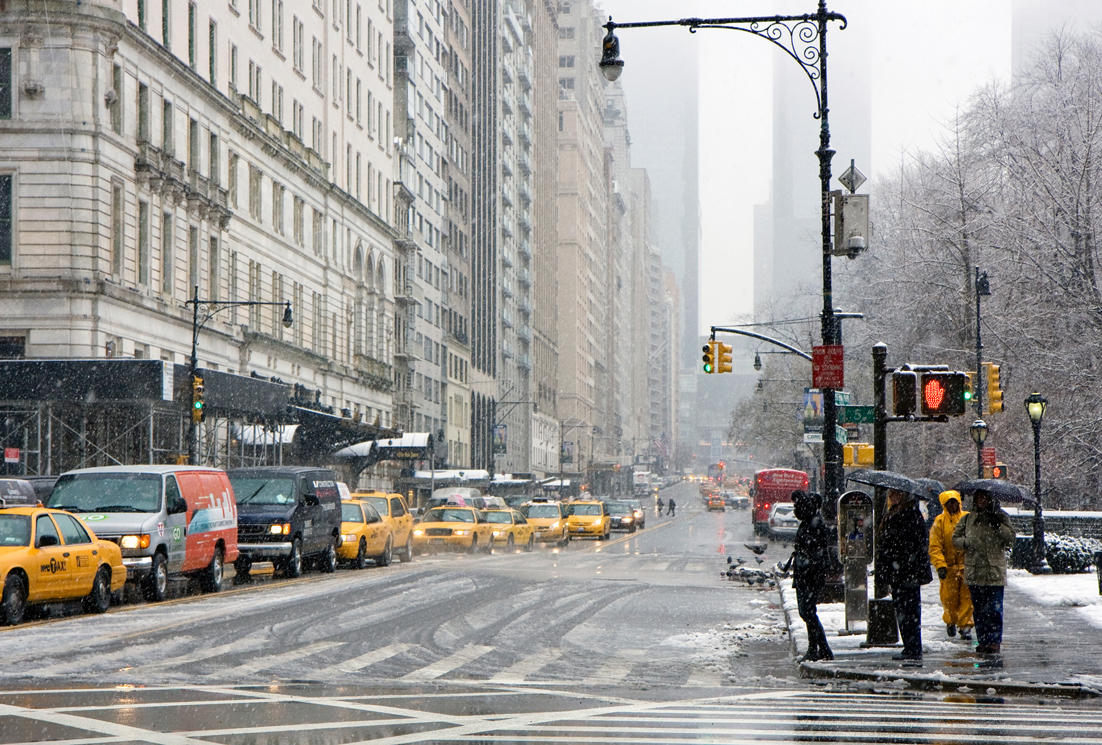Well, we almost made it. The winter of 2023-24 was one of the mildest on record and it looked like we were going to break a record for the lowest winter snowfall in recorded history. Then came March…
Our recent heavy, wet snowfall is causing all sorts of problems with our clients’ flat commercial roofs. Our Mint Roofing service techs have been busy fixing leaks since this last gasp of winter dumped on us. From the excessive weight of the snowpack to the melting underneath it, we’re seeing more issues than usual at this time of the year.
When winter’s snow turns to spring rain, it can be a double whammy for commercial roofs. The combination of heavy snow and spring rain on commercial roofs can lead to serious damage. Minnesota tends to see a lot of heavy snowfall followed by rainfall in the Spring, and it’s important to take precautions to protect your roof from the impact. In this blog post, we discuss how to prepare your commercial roof for the impact of heavy snow and spring rain.
Just when you thought it was safe to go outside.
It’s bad enough that March is historically the third snowiest month in Minnesota (It’s true, January and December have more average snowfall). We also start to see our first rainstorms of the season – and some of them can be heavy!
While snowfall totals may be lower in March than in other months, the snow that falls in early Spring is wet and heavy, so less can, unfortunately, be more.
Why does rain make matters worse for your commercial roof?
This combination of heavy snow and rain can wreak havoc on your commercial roof. The extreme weight of heavy, wet snow alone can cause your roof to collapse if it exceeds your roof’s load capacity.
Rain adds moisture content to the accumulated snow, increasing the load your roof needs to support. Just one inch of saturated snow can weigh as much as two feet of lighter snow with lower moisture content.
Early spring rainstorms seldom melt the snow on your roof because the temperatures tend to be close to the freezing point. When temperatures hover around the freezing point, the rain causes the bottom layer of snow to turn to ice.
Water gets trapped beneath the snow and ice as it melts, creating pressure to build up on the roof membrane. Under rather extreme pressure, this trapped water can seep through any cracks or holes in the roof and cause severe water damage to the interior of your building. It can also cause new leaks to form in weak areas in the membrane or flashings.
Let’s face it, snow, ice, and water are your commercial roof’s worst enemy.
This is no time to take a gamble that your commercial roof is ok.
It’s easy to assume your roof is okay and that Spring will soon be here, flowers will be in bloom, and songbirds will be singing again. We Minnesotans tend to forget that this part of Spring can last A LONG TIME. That gives Mother Nature plenty of time to mess with the integrity of your roof.
Fortunately, there are a few things you can do now to survive this winter-spring weather:
- Have your commercial roof professionally inspected for any signs of damage and repair any leaks now.
- Have excess snow professionally removed before the seasonal transition to rain.
- Have your commercial roofing contractor clear your roof’s drainage system of any debris so that water can flow freely off the roof as the snow starts to melt.
- Sign up for a Preventative Maintenance Plan for your commercial roof. These plans save you headaches, money, and the need to remember to schedule inspections.
Take action NOW to avoid expensive problems LATER!
Roof damage due to heavy snow and rain can be a serious problem – it can lead to leaks, water damage, and even structural failure.
But by taking a few simple precautions, you can protect your roof and avoid costly repairs from the combined impact of heavy snow and spring rain.
While you may not be able to prevent all damage, the sooner you take these precautions, the less significant any damage will be.
Questions? Wonder how to get started?
If you have any questions about preparing your commercial roof for the heavy snow and Spring rain on your commercial roof, contact us today. We will assess your current situation and provide guidance on the best course of action for a trouble-free spring – just flowers and birds.
We’ll walk through our TopSite Preventative Maintenance Program to show you how you can save money and extend the life of your commercial roof.
Give us a call or send us an email today!

FAQs


